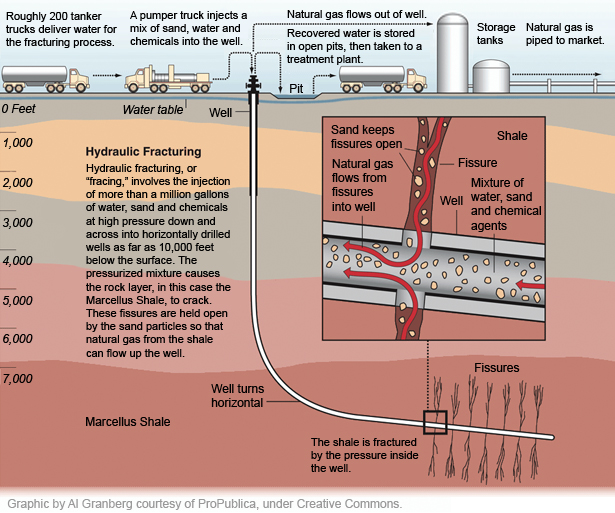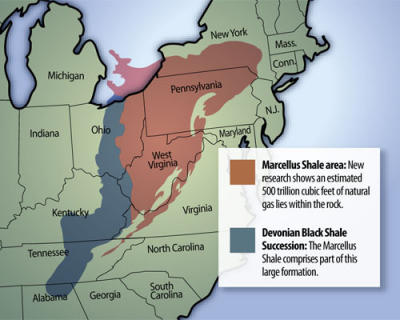Marcellus Shale Progress Addressing Methane Contamination
By admin on September 21, 2011
 At a recent Shale Gas Insight conference in Philadelphia, Aubrey McClendon, the outspoken Chairman of Chesapeake Energy, expressed optimism concernining progress made by industry to address methane contamination of drinking water supplies due to faulty gas well construction. According to McClendon, "Problem identified; problem solved". However, according to the Times-Tribune writer, Laura Legere, DEP data concerning environmental violations demonstrates that McClendon’s optimism may be premature and that problems with cemented steel well casings designed to protect groundwater from gas and fluids in Marcellus wells perist. Of course, casing and cementing violations do not necessarily indicate that gas has migrated or will migrate into drinking water supplies. Moreover, methane is present in many water wells in PA from natural pathways unrelated to gas drilling. However, the crux of environmentalists’ opposition to hydrofracking appears to center on the gas casing and cementing concerns. In his comments, McClendon credited an "updated and customized casing system" included in PA state regulations which will hopefully prevent new instances of gas migration. It is recognized, however, that the geology in Marcellus Shale is neither uniform nor predictable and that the geologic issues are complex. In planning for Marcellus Shale natural gas exploration in New York, NYDEC personnel have taken to heart (we hope) the lessons of PA’s experience–good and bad–with hydrofracking and will craft a set of regulations in NY that will promote safe natural gas exploration on a sound economic footing. DEC’s website contains a detailed discussed of DEC staffers’ visit to PA in July ’11 that detailed the environmental issues in PA that NY needs to address in its regulatory framework.
At a recent Shale Gas Insight conference in Philadelphia, Aubrey McClendon, the outspoken Chairman of Chesapeake Energy, expressed optimism concernining progress made by industry to address methane contamination of drinking water supplies due to faulty gas well construction. According to McClendon, "Problem identified; problem solved". However, according to the Times-Tribune writer, Laura Legere, DEP data concerning environmental violations demonstrates that McClendon’s optimism may be premature and that problems with cemented steel well casings designed to protect groundwater from gas and fluids in Marcellus wells perist. Of course, casing and cementing violations do not necessarily indicate that gas has migrated or will migrate into drinking water supplies. Moreover, methane is present in many water wells in PA from natural pathways unrelated to gas drilling. However, the crux of environmentalists’ opposition to hydrofracking appears to center on the gas casing and cementing concerns. In his comments, McClendon credited an "updated and customized casing system" included in PA state regulations which will hopefully prevent new instances of gas migration. It is recognized, however, that the geology in Marcellus Shale is neither uniform nor predictable and that the geologic issues are complex. In planning for Marcellus Shale natural gas exploration in New York, NYDEC personnel have taken to heart (we hope) the lessons of PA’s experience–good and bad–with hydrofracking and will craft a set of regulations in NY that will promote safe natural gas exploration on a sound economic footing. DEC’s website contains a detailed discussed of DEC staffers’ visit to PA in July ’11 that detailed the environmental issues in PA that NY needs to address in its regulatory framework.

 natural gas and oil drilling buried in the DEC’s hazardous spills database. However, it was reported on January 11, 1010 that
natural gas and oil drilling buried in the DEC’s hazardous spills database. However, it was reported on January 11, 1010 that  Environmental groups and proponents of economic development and natural gas exploration are on a collision course of competing economic and environmental interests involving an enormous untapped reservoir of natural gas in the
Environmental groups and proponents of economic development and natural gas exploration are on a collision course of competing economic and environmental interests involving an enormous untapped reservoir of natural gas in the